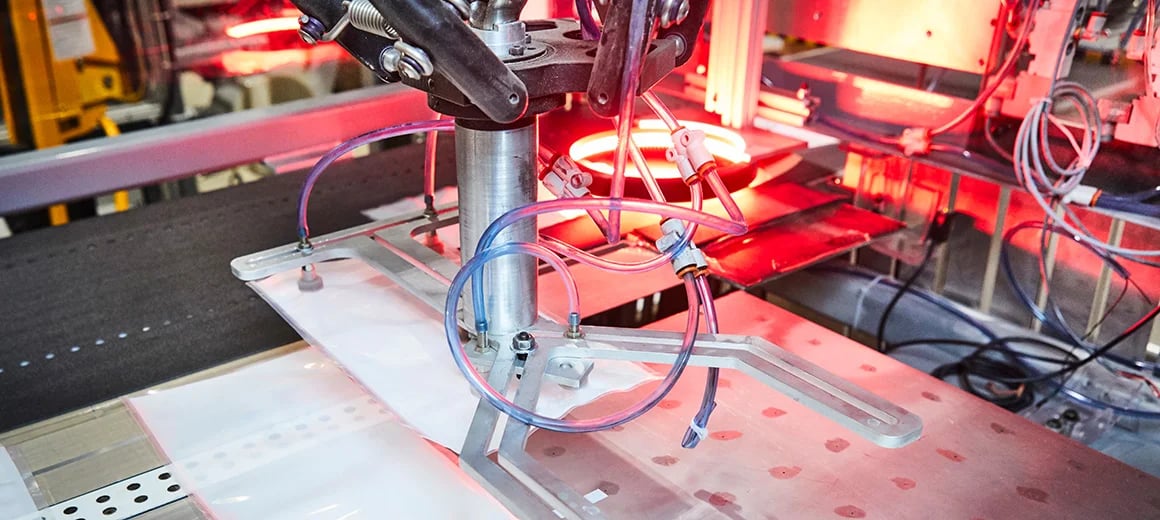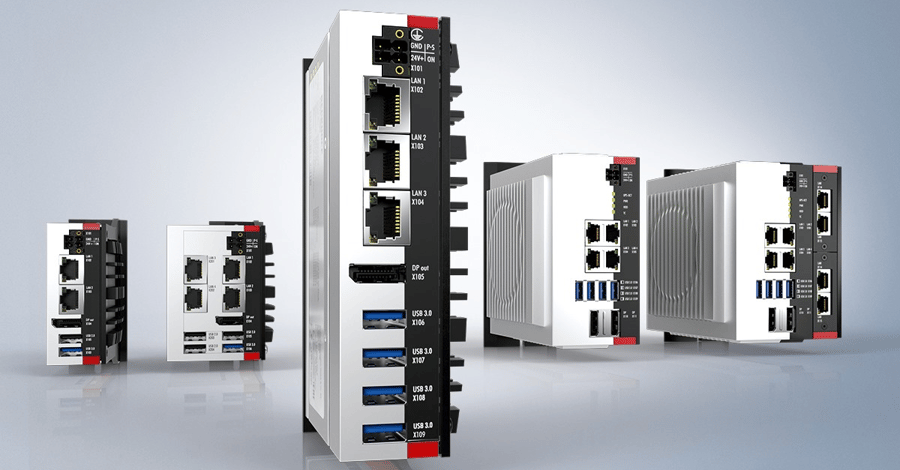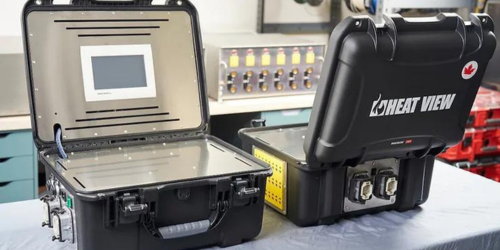Modern machine builders are under increasing pressure to balance a shortage of skilled labour with surging demand for innovative automation and manufacturing processes. To navigate this quickly evolving, tricky terrain, more and more are choosing PC-based control systems over traditional PLCs to give them the tools and capabilities to work smarter, faster, and in a more cost-efficient way.
In this blog post, we’ll look at three areas where machine builders are benefiting from PC-based control systems and how you too can leverage the technology to help grow your business.
1. Reduce Overall Machine Costs By Centralizing Control
Traditional machine architectures often involve separate CPUs for PLC, motion control, and HMI, which can increase complexities and expenses.
Machine builders are increasingly opting for centralized control, enabled by PC-based systems, to streamline operations and reduce overall machine costs.
Let’s take a closer look at the benefits of centralized control and PC-based systems:
- Minimizing hardware and integration complexities
Centralizing control through a single industrial PC (IPC) eliminates redundant CPUs and hardware components, while also simplifying hardware integration into software. This unified approach consolidates software and data in one location, streamlining operations and diagnostics, improving uptime, and reducing energy consumption and overall machine costs.
Matrix Packaging, a leading packaging equipment manufacturer, automated a machine using a PC-based control system and EtherCAT networking. This new system significantly improves performance and functionality and delivers at least 10% cost savings compared to their previous PLC-based solution, including reduced hardware and a 50% reduction in motor cabling. - Reducing commissioning time
By integrating all functions into a single system, PC-based control streamlines the setup process and accelerates time-to-market, all while minimizing complexities and reducing operational downtime.
2. Increase flexibility to boost performance and scalability
To match the rapid pace of innovation, builders are increasingly asked to integrate diverse functionalities and adapt to emerging technologies. Traditional PLCs often struggle in this area due to their more limited processing power, which restricts them to single tasks.
PC-based control systems, on the other hand, excel in integrating additional functionalities, such as vision systems, robot controllers, or third-party software functions alongside PLC tasks. This flexibility enhances capabilities and eliminates the need for separate control systems.
Labplas, a Canadian manufacturer of sterile sampling bags and accessories, is an example of the transformative impact of PC-based control solutions. By embracing Beckhoff’s open, PC-based control solutions, Labplas revamped its custom production machines and seamlessly integrated robotics. The shift led to an average productivity gain of 25% on upgraded lines, while also enhancing quality control.

While the flexibility provided by PC-based control systems can have an immediate impact, they also equip machine builders with the adaptability needed to navigate future trends and industry developments, including:
- The accelerating transition of on-premises applications to cloud systems, necessitating machines and systems to feed production and status information.
- The continued integration of Industrial Internet of Things (IIoT) systems, which is facilitated by cloud infrastructure and data communication protocols such as OPC UA, MQTT, and REST.
- The evolution of digital business models into 'as a service' models, where analytics and value generation are shifted to cloud applications. To adapt to these changes, machines and systems must be retrofitted for IoT-capable communication, most often with IoT couplers, I/O components, and sensors.
- Shifts in user behavior, including the increasing use of mobile devices as working tools, and the demand for modern HTML5-based visualizations and responsive web design.
3. Extend machine lifecycles for long-term success
When a PLC faces obsolescence, the entire control architecture, including its software, becomes obsolete with it. Companies relying on PLCs, therefore, should expect to completely redesign their control system every five years or so.
In contrast, a PC-based control system promotes a more sustainable approach to system design and maintenance, including:
A focus on software design
Unlike PLCs that are tied to specific hardware platforms, PC-based control systems like Beckhoff's TwinCAT 3 utilize a software-centric approach, which offers several key benefits, including:
- Faster commissioning and shorter build cycles: Software-based control systems allow for faster integration and configuration, accelerating time-to-market.
- Streamlined diagnostics: With minimal hardware dependencies, troubleshooting becomes easier, and maintenance requirements are minimized.
- Scalability and future-proofing: By decoupling software from hardware, you can upgrade hardware components without rewriting code. This ensures compatibility across generations, extending the lifespan of your control system.
A project by Sodecia Global Tech and Automation Center exemplifies the power of a software-centric approach. The company successfully redesigned an assembly machine within a tight development timeframe using TwinCAT automation software, in the process achieving a 5.1-seconds-per-part throughput rate.
Seamless transition and reusability
Software on an IPC easily transfers to new processors, ensuring prolonged system life cycles and reducing the need for frequent and costly redesigns. PLC programs and fieldbus configurations also transition smoothly to TwinCAT runtime on new IPCs, eliminating the need for code modifications. By decoupling software from hardware, this forward-thinking approach ensures code compatibility across different processor generations.
This becomes even more critical in aging control systems and environments, where tight schedules, a reactive approach to maintenance, and obsolete components can turn minor issues into major disruptions. Addressing this requires proactive lifecycle management to document and track hardware and software.
Beckhoff’s proactive Product Life Cycle Management approach can help with this, keeping you informed about product statuses, replacement devices, spare parts, repair services, and guidance on alternative solutions.
.png?width=76&height=76&name=Untitled%20(100%20x%20100%20px).png)
%20(500%20x%20500%20px).png?width=700&height=700&name=Untitled%20(100%20x%20100%20px)%20(500%20x%20500%20px).png)



.png)
.png)